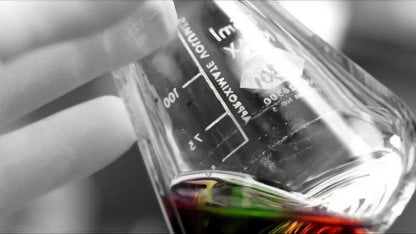REACH nanomaterials testing services in accordance with REACH Annex VI
Nanomaterials offer a wide range of technical and functional advantages across various industries, from batteries to cosmetics. However, they also pose potential risks to human health and the environment. To address these concerns, the EU Regulation 1907/2006, commonly known as REACH, underwent an amendment in 2018 (2018/1881) specifically addressing nanoforms. This amendment, effective since January 1, 2020, outlines legal requirements for companies involved in the manufacture or import of nanoforms of substances subject to nano REACH regulation compliance.
Under REACH Annex VI amendment 2018/1881, each registrant of a nanoform or nanomaterial of a substance must adhere to specific obligations. This entails reporting each nanoform in the registration dossier alongside any non-nanoform, ensuring full compliance with regulatory obligations as amended for Annexes I, III, VI, VII, VIII, IX, X, XI, and XII.
Actors with registration duties include manufacturers and importers of substances, producers and importers of articles in case the substance is intended to be released under normal or reasonably foreseeable conditions of use, and Only Representatives within the EU. While downstream users are not obligated to register new nanoforms, they must ensure their safe use in accordance with SDS information and may need to prepare their own chemical safety reports if necessary.
Furthermore, the obligation to register nanomaterials applies regardless of whether their manufacture was intentional, extending to nanoforms produced as dispersions. Each manufacturer and/or importer bears the responsibility of determining if their substance qualifies as a nanoform and ensuring its characterization and reporting. Characterizing nanomaterials to meet regulatory registration requirements is complex due to the need for precise measurement of properties like size, shape, and surface chemistry, which can significantly influence their behavior and risk profile.
As per the Commission Recommendation of 18 October 2011, the established nanomaterial definition is as a form of a substance containing particles where 50% or more of the particles have one or more external dimensions in the size range of 1 nm to 100 nm. This includes various structures such as fullerenes, graphene flakes, and single wall carbon nanotubes.
REACH nanomaterial testing
Our experts provide REACH nanomaterials testing services, essential for ensuring regulatory compliance and safety including comprehensive chemical and physical testing services encompassing a wide range of analytical techniques tailored to meet the diverse needs of industries dealing with nanomaterials.
For substance identity testing, the nanoform of a substance is characterized in the same way as the non-nanoform in terms of substance composition and impurities. There is additional testing for characterization of the nanoform and to be able to differentiate between different nanoforms of the same substance.
Our nanomaterial experts provide specific nanomaterials analyses such as number-based particle size distribution with number fraction of particles between 1nm and 100nm, characterization of surface functionalization if required, shape, aspect ratio and morphology such as crystallinity, and surface area.
We provide comprehensive solutions to ensure compliance with REACH regulations and to facilitate safe and responsible use of nanomaterials.
Particle size distribution and shape of nanoparticles
Particle size distribution is a key aspect of nanomaterial characterization. REACH Annex VI requires the reporting of number-based particle size distribution, with methods needing to be scientifically sound. ECHA recommends the use of at least one electron microscopy technique to determine the particle size distribution and the number fraction of constituent particles, as well as the shape category. Our experts provide SEM (Scanning Electron Microscopy) analysis and images across a range of magnifications to illustrate the morphology of the nanomaterial and the degree of agglomeration present in its as received state. Alongside SEM we provide TEM (Transmission Electron Microscopy) images with calibrated scale bar from which measurements of primary particles can be made as well as determinations of aspect ratio and shape category.
The shape categories are divided into four broad categories determined by aspect ratios: Spheroidal (aspect ratio up to 3:1), Elongated (aspect ratio larger than or equal to 3:1), Platelets (particles with one external dimension significantly smaller than the other two external dimensions) and Multimodal (includes nanoforms manufactured as a mixture of shapes).
Our experts use PSD (Particle Size Distribution) using Laser Diffraction and DLS (Dynamic Light Scattering). We are experienced in overcoming challenges which may arise due to sample preparation methods and the choice of characterization techniques, highlighting the importance of engaging with expert scientists who can adopt multiple methods for accurate results.
Composition, surface functionalization and crystallinity of nanomaterials
For substance identity analysis of the nanomaterial composition the same requirements must be fulfilled as for non-nanoforms. Structure and purity must be determined using the most appropriate range of analytical techniques (for example, NMR, chromatography, FTIR, UV/Vis, ICP, XRF and XRD). In addition, for nanomaterial the surface treatment, if any, must be described in the dossier and supported with analytical data to prove thickness and chemical composition of layers and functional groups. The analytical approach depends on the surface treatment used.
Another aspect when considering composition of nanomaterials relates to their shape composition. For example, a nanomaterial may be manufactured with 20% of one shape of particles and 80% of a different shape. This would be reported in the dossier including batch-to-batch variability. The same substance may also be manufactured as a second nanoform with different % composition of particle shape which could impact on its properties and would need to be described and evaluated separately.
The shape is primarily determined using Electron Microscopy (EM) methods. It may also be possible to see if there is evidence that it is crystalline in nature using EM but it would need XRD analysis to describe the amorphous or crystalline nature of the substance.
Surface area of nanomaterials
Surface area is also a vital parameter. The high surface area to volume ratio of nanoparticles significantly impacts their properties, often requiring specialized techniques like gas adsorption using the BET (Brunauer–Emmett–Teller) isotherm method for accurate measurement.
Expertise in nanoform characterisation for REACH
At Intertek, we are committed to providing cutting-edge REACH testing services which includes tailored REACH substance identification, sameness, composition and impurities analysis. Our experts are ready to support your regulatory compliance and ensure the safe utilization of nanomaterials in various industries. Contact us today to learn more about how we can assist you in navigating the complexities of nanoform characterization and REACH compliance.

